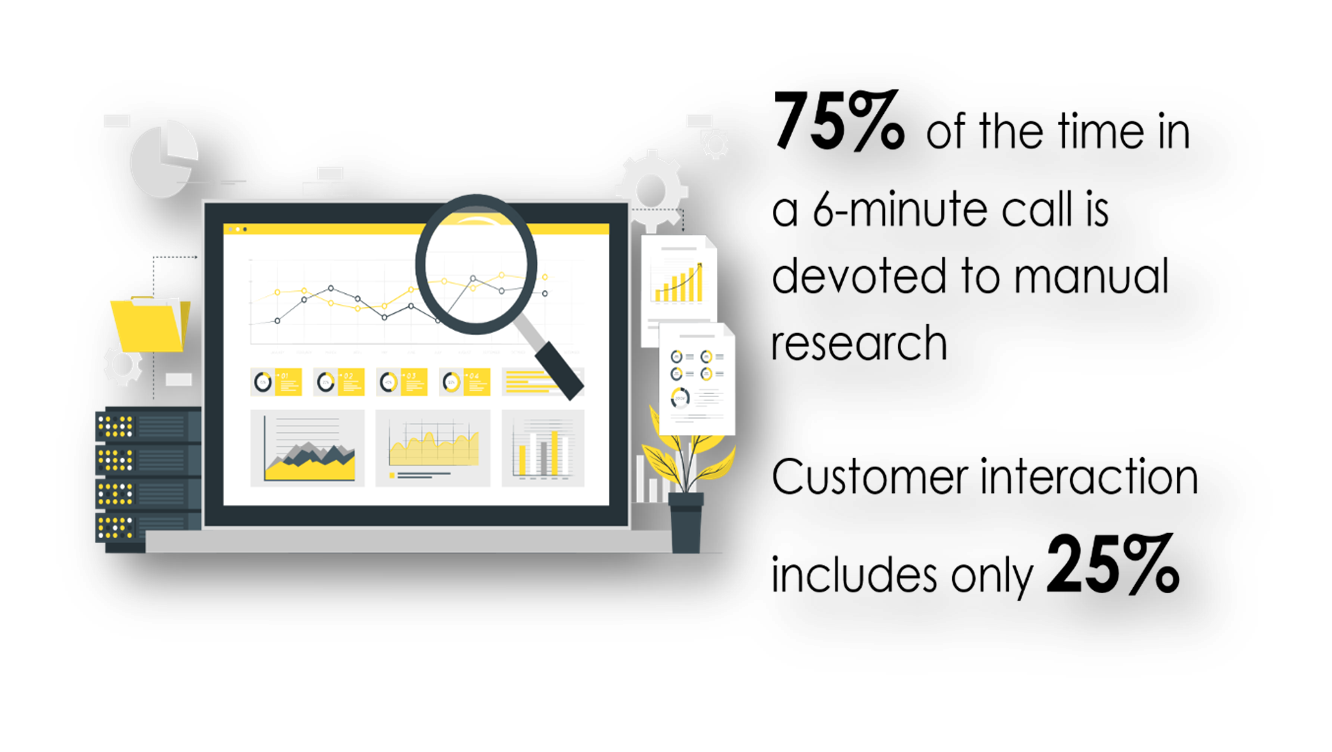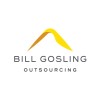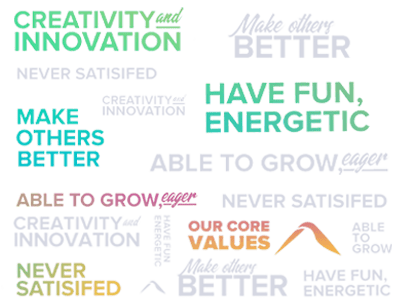Introduction:
Performing the job of a call centre agent is never easy. From handling customer requests to resolving their queries, the calls received by the call centre agents per day are extensive and varied. Therefore, accomplishing success in their profile essentially depends on their average time to end a call or resolve a query. In call centre metrics, this is known as Average Handle Time (AHT).
Call Center metrics industry standards
- First call resolution (FCR)- 70-79%
- Average Handling Time (AHT)- 2-4 minutes
- Abandonment Rate- 5-10%
What is Average Handle Time (AHT)?
Average Handle Time is a call center metric that measures the time a call center executive takes to complete a specific task or help a caller resolve. An important parameter to measure efficiency, AHT is not solely based on the call duration but also on several other factors, such as:
- Talk time: An agent’s time while talking to a customer until resolution.
- Hold time: The amount of time the agent put the caller on hold to gather the requisite information. This does not include the time the customer spends waiting in a queue.
- After-call time: The time spent completing the paperwork and other related tasks after the call ends. It is also known as the total wrap time or post-call work time.
How is Average Handle Time Calculated?
Since the call centers need to keep a close track of their agents’ AHT, a standard formula has been devised to calculate this metric:
Average Handling Time = (Total Talk Time + Total Hold Time + Total Wrap Time) / Number Of Calls Handled
Why AHT Alone Doesn’t Define Performance
While measuring AHT is necessary occasionally, the call centers must remember that it is not the only criterion to measure productivity. Setting benchmarks and tracking the agents’ performance is vital to help identify the steps that can be taken to improve the company’s growth and performance. It is also important to remember that a lower AHT does not necessarily benefit the company. A lower AHT can also imply a significant compromise on quality, as over-emphasizing the need to reduce the call duration may push the agents to compromise on service quality.

Improving AHT: Easy Fixes with Significant Impact
There are certain situations when an agent’s AHT is exceptionally high. Several factors, such as a slow computer system, longer call duration, extended hold time, and various others, can cause this. In such a situation, the call centers need to take necessary measures that can help improve the AHT. Some of these are mentioned below:
- Improving the Agent Training Process: Providing adequate training to the call center agents is essential to equip them with the correct information to deliver the best customer service. Eliminating the agents’ need for fumbling between different software, this process provides the agents with adequate information to handle the most challenging cases that may arrive.
According to an article by Harver-The 4 Leading Causes of Contact Center Attrition & How to Overcome Them– Deficient training contributes immensely to the call center industry’s elevated employee attrition rate of 20% to 30%[i].
- Monitoring Calls & Identifying Weak Areas: Recording and monitoring the calls handled by the agents can help identify their weak performance areas. Focusing on these areas and working towards improving the same can play a crucial role in boosting the team’s performance and morale.
- Accurate Call Routing: Adopting this technology in a call center can play a crucial role in improving AHT. This is because routing the calls to the most suitable agent affirms that the customer’s query would be resolved in the best possible manner in the minimum time possible.
- Arming with Requisite Knowledge Base: It is crucial to provide the call center agents with all the necessary information to help them resolve customer queries quickly and rapidly. Providing them with the requisite details in one place saves much of their and the customer’s time. Instead of spending time searching for information while keeping the caller on hold, they can offer an immediate resolution to the customer’s problem.

- Use an Internal Communication System: An internal communication system that can access instant messaging can help reduce AHT. This system provides agents easy access to help from other agents via chat while the customer is still on the phone. This, in turn, not only saves their time but also assists the agents in delivering an improved performance.
Quicker Calls, Larger Gains: The Hidden Power of AHT
As per the data provided by Phonexia in the article The New Normal for Call Centers Unleashed by COVID-19–Reducing the average handle time by 30 seconds can result in a USD 2500K daily savings for a call center with 50 workers that answer five thousand calls every day[i]
Benefits of Improved AHT
The benefits of improved AHT are not limited to attaining maximum customer satisfaction. This metric is beneficial in several other ways:
- Evaluate Employees’ Performance: The measurement of AHT is beneficial in analyzing how the employees are supporting the customers. While keeping this metric as low as possible is essential, avoiding forcing the agents to attain its lowest number is also crucial. This is because doing so is likely to deteriorate the customer service quality.
- Identify Staffing Needs: Determining the average time an employee takes to complete a task or handle a customer’s query can help determine the organization’s staffing needs. For instance, a long waiting queue implies that a number of customers are kept waiting, signifying the need to add more staff members.
- Reduce Costs & Increase in Revenue: A reduction in AHT implies increased revenue. This is because reduced AHT helps improve the productivity level of the call center agents and streamlines the overall workflow process. This, in turn, culminates the extra costs, leading to improved overall.
Conclusion-Enhance AHT Today for Future Success
AHT goals vary in different organizations. While spending four minutes per call is fine for a few, others might prefer to spend between one to two minutes per call. Therefore, there can never be a defined standard for AHT.
The best way to improve AHT is by effectively planning an organization’s long-term goals. This, in turn, would be beneficial in defining how the available resources can be used to the best of their ability and allow the delivery of improved customer experience. Above all, it’s best to use AHT and its parameters to attain long-term profitable growth.
Frequently Asked Questions About Average Handle Time (AHT)
1. What is Average Handle Time (AHT)?
Average Handle Time (AHT) is a key performance metric in call centers that measures the average duration an agent spends handling a customer interaction. It includes:
- Talk Time: The duration the agent spends speaking with the customer.
- Hold Time: The time the customer spends on hold during the interaction.
- After-Call Work Time: The time spent by the agent completing tasks related to the call after it ends, such as updating records or sending follow-up emails.
AHT is calculated using the formula:
AHT = (Total Talk Time + Total Hold Time + Total After-Call Work Time) / Number of Calls Handled
This metric helps assess the efficiency of call center operations and the effectiveness of customer service.
2. Why is AHT important?
AHT provides insights into several aspects of call center performance:
- Operational Efficiency: Helps in evaluating how effectively agents are managing customer interactions.
- Workforce Planning: Assists in determining staffing needs based on average call durations.
- Customer Satisfaction: Balancing AHT with quality service ensures customers receive timely and effective support.
However, it’s important to note that focusing solely on reducing AHT can sometimes compromise service quality if agents feel pressured to end calls prematurely.
3. What is considered a good AHT?
A “good” AHT varies depending on the industry and the complexity of customer interactions. However, industry standards suggest:
- 2–4 minutes as a typical range for AHT in call centers.
It’s crucial to consider AHT alongside other metrics like First Call Resolution (FCR) and Customer Satisfaction (CSAT) to get a comprehensive view of performance.
4. How can AHT be improved?
Improving AHT involves a combination of agent training, process optimization, and technology enhancements:
- Agent Training: Equip agents with the necessary skills and knowledge to handle calls efficiently.
- Process Optimization: Streamline workflows to reduce unnecessary steps during customer interactions.
- Technology Integration: Implement tools like CRM systems and knowledge bases to provide agents with quick access to information.
By focusing on these areas, call centers can improve AHT while maintaining high service quality.
5. What factors can influence AHT?
Several factors can impact AHT:
- Call Complexity: More complex issues naturally require longer handling times.
- Agent Experience: Experienced agents may resolve issues more quickly than less experienced ones.
- System Efficiency: Slow or outdated systems can increase handling times.
- Customer Behavior: Customers who are unclear or unprepared can extend call durations.
Understanding these factors can help in identifying areas for improvement and setting realistic AHT targets.
Sources :
>2024 Call Center Trends & Statistics
The 4 Leading Causes of Contact Center Attrition & How to Overcome Them
80 Customer Service Statistics to Know in 2024 (+ State of Service Data)
The New Normal for Call Centers Unleashed by COVID-19
what is wrap up time 7-ways-to reduce it




